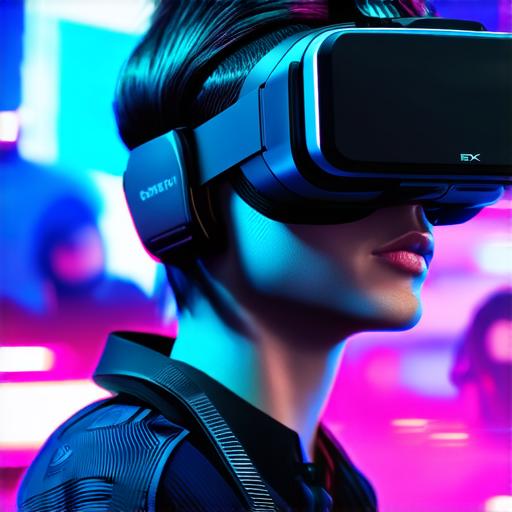In today’s rapidly changing world, the pursuit of knowledge is no longer confined to traditional classrooms. A revolutionary technology, Virtual Reality (VR), is redefining training and development across industries by offering an immersive, interactive, and engaging learning experience that transcends the limitations of physical spaces.
Immersive Learning Experiences
VR provides a simulated environment where trainees can interact with their surroundings in a manner that closely mimics real-world scenarios. This allows them to gain hands-on experience without the risks associated with actual situations. For instance, medical students can practice surgeries in VR before performing them on patients, reducing potential harm and improving their skills. Similarly, pilots can train for different flight conditions without leaving the ground, enhancing their readiness for real-world situations.
Enhanced Retention Rates
Research shows that VR learning significantly boosts retention rates. A study by the University of Maryland found that students who used VR for learning retained 90% of the material compared to 20% from traditional lectures. This is attributed to the active participation and engagement that VR provides, making learning more memorable. The immersive nature of VR creates a stronger emotional connection with the content, leading to better recall and understanding.
Real-life Examples
Consider Airbus, which uses VR to train its engineers. By simulating aircraft assembly in VR, they reduce errors, save time, and ensure safety. Similarly, Google’s Deepmind uses VR for training AI models, accelerating their learning process. The military also leverages VR for simulation-based training, allowing soldiers to experience various combat scenarios without putting them in harm’s way.
The Future of Training
VR is not just a passing trend; it’s the future of training. As technology advances, we can expect to see more industries adopting VR for training purposes. From soft skills training in corporate settings to technical skills training in manufacturing, VR promises to revolutionize the way we learn and develop skills.
Overcoming Challenges
While VR holds immense potential, it’s not without its challenges. High costs and technical complexities are barriers that need to be addressed. However, as technology becomes more affordable and user-friendly, these hurdles will likely diminish. As VR becomes more accessible, we can expect to see a wider adoption of this technology in training and development.

FAQs
1. Is VR only useful for high-risk training?
No, VR can be used for a wide range of training scenarios, from soft skills to technical skills. Its immersive nature makes it an effective tool for learning and retaining information across various domains.
2. How does VR improve retention rates?
VR provides an immersive, interactive learning experience that encourages active participation and engagement, leading to better retention. The emotional connection created with the content enhances recall and understanding.
3. Is VR expensive?
While VR equipment can be costly, the benefits it offers in terms of reduced errors, increased efficiency, and improved training outcomes make it a worthwhile investment for many organizations. As technology becomes more affordable and user-friendly, the costs are expected to decrease, making VR accessible to a wider audience.
In conclusion, Virtual Reality is transforming the landscape of training and development. By offering immersive, interactive learning experiences, it’s helping us learn faster, retain more, and develop skills more effectively. As technology continues to evolve, we can expect VR to play an increasingly significant role in our lives, revolutionizing the way we learn and grow.
